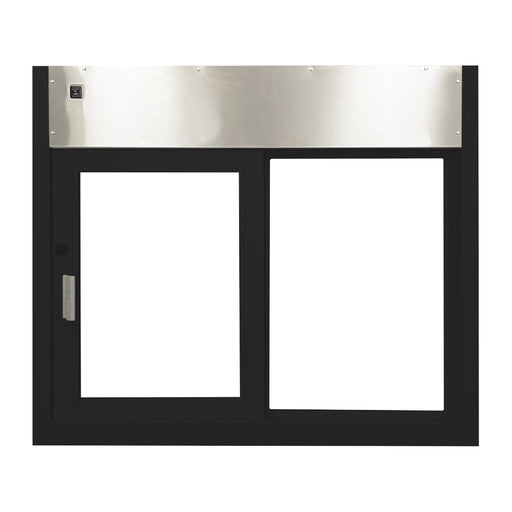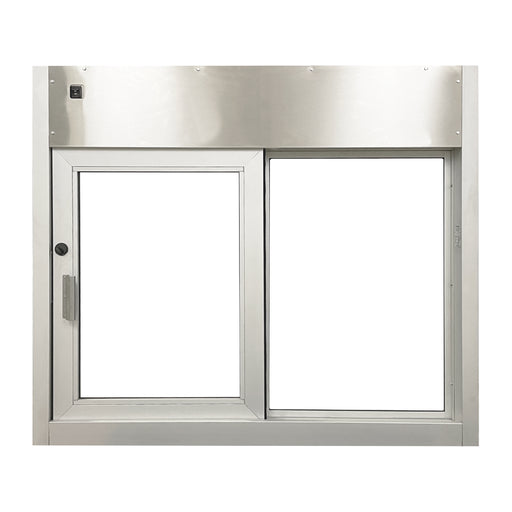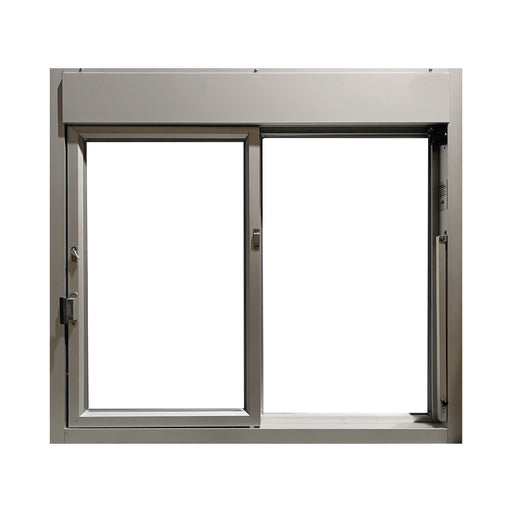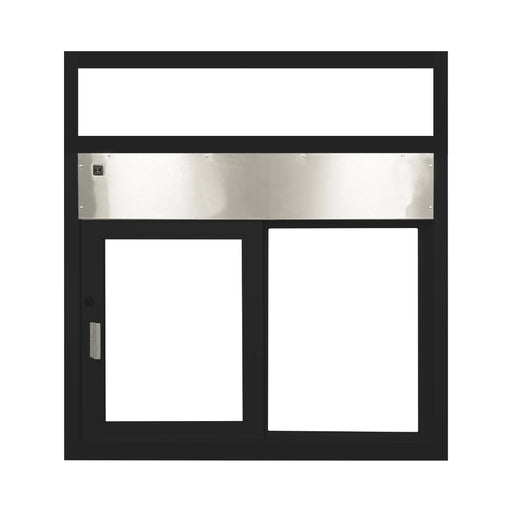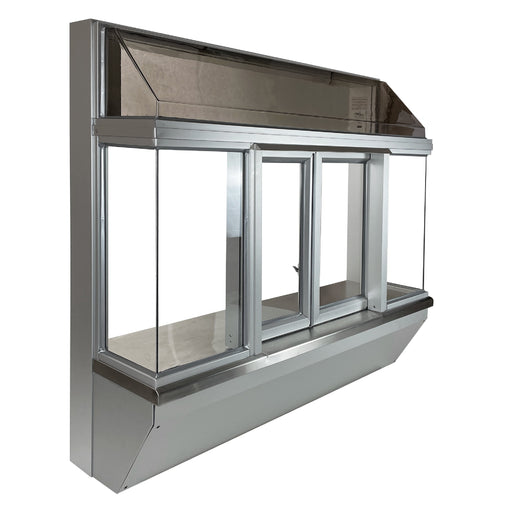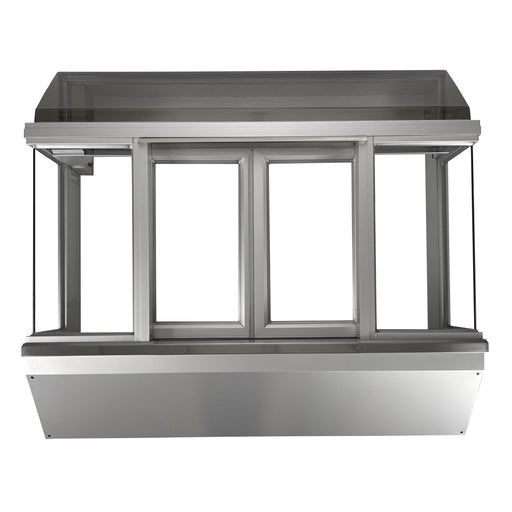
Armorcore Level 4 Bullet and Fire Resistant Fiberglass Wall Panel UL 752 Rated
Usually Ships Within:
Our bullet resistant panels are designed to absorb a bullet’s energy within the panel’s laminate. The composite laminate consists of woven fiberglass reinforced with resin, which makes it capable of defeating a bullet through a process of energy absorption within the laminate. Once the panels have begun to delaminate from impact, any additional shots become progressively easier to defeat because the energy is more readily absorbed by the laminate. In contrast to steel barriers, the fiberglass laminate is designed to prevent ricochet of the bullet as well as spalling to the non-threat side of the panel.
Bullet resistant fiberglass panels are most commonly used in wall assemblies, counters, doors, millwork, cubicles, and desks for many different architectural facility designs. Some of these facilities include Commercial, Schools, Financial, Government, Grid Security, Healthcare, Law Enforcement, Military, Residential, Safe Rooms and beyond.
Key benefits:
- Lighter weight than steel
- Easy to install with standard tools
- Effective delay against forced entry
- Low wicking – no build-up of mold
- Non-toxic materials
- 1-Hour fire rating (ASTM E119-00)
- Available in sizes up to 5′ x 10
- Available in the UL levels 1-8
UL 752 Industry Standards
Underwriters Laboratories, Inc., the world’s oldest and largest, not for profit, independent testing company, wrote the standard for bullet resistant materials. The UL752 standard has been widely accepted throughout the world as the standard for architectural bullet resistive building materials.
Our panels have been tested according to that standard by Underwriters Laboratories, Inc.
A ballistic resistive product becomes “UL Listed” after being subjected to a variety of ballistic tests which include shooting the materials while frozen at -25 degrees Fahrenheit and while heated to 120 degrees Fahrenheit. After the initial testing series, the product is then set up for maintenance testing that involves “pulling random samples” without notice from the manufacturer’s routine production on a quarterly rotation. This rigorous testing schedule ensures that the product is being made without variation and has the highest level of ballistic resistive integrity available.
Installation
The following recommendations are designed to assist in the installation of bullet resistant fiberglass panels, as well as to preserve the ballistic protection the panels are designed to provide. Different elements of working with the product and certain challenges are addressed, in addition to important options and expert tips to consider when ordering the product. The material is manufactured by mechanically injecting woven roving ballistic grade fiberglass cloth with a thermoset polyester resin. The impregnated cloth is then placed in a hydraulic hot press and pressed into flat rigid sheets.

Panel Sizes and Cutting
Covenant Security Equipment provides panels in any combination of 3’, 4’ & 5’ widths by 8’, 9’ & 10’ lengths. In the field, panels can be cut with a diamond-grit blade. For electrical boxes and other small openings, a diamond grit blade (available through most builder’s supply in the ceramic tile section) on a reciprocating saw should be sufficient. In addition to wearing protective clothing, a fan can be placed behind the cutting area to help blow away fiberglass particles.
Cut using ordinary carpentry tools. Circular saw, table saw, panel saw, saber saw, etc. Use the following blades: RemGrit "Grit Edge": GC703 7" Circular, GC805 8"Circular, GC915 12" Circular, GJ18 Saber Saw or a Tenryu TSD Series 7". The 7” Blade cuts extremely hard abrasive materials.
Fastening and Drilling
Bullet Resistant Fiberglass may be drilled using high speed steel twist drills. Materials should be drilled at a slow speed. Panels may be attached using self-tapping drywall screws. When attaching a panel to a stud wall on which drywall will be the exterior surface, simply use enough screws to hold the panel to the studs, then come back with a complete screw pattern to the studs when hanging the drywall on top. If a different appliqué is to be used over the panels and a flush surface is required, a counter-sink hole may be used before adding the screws. Panels up to 1-1/8” and thicker may require pre-drilling the fastener holes to prevent the screw heads from breaking, as well as to facilitate the installation. It is recommended that you use a carbide or cobalt tip drill bit at medium speed with medium pressure. Low carbon (high-speed steel) bits may be used, but will typically have a shorter lifespan.
Adhesives and Laminating
Panels can also be attached with the use of adhesives. One product available is PL Premium Polyurethane Construction Adhesive. For stronger adhesion to non-porous substrates, such as aluminum, steel and stainless steel, or bonding one panel to another, a 2-part Methyl Methacrylate (MMA) adhesive may be utilized, such as Plexus MA 320. Laminates can be applied with standard contact adhesives and should be thick enough to avoid transfer of texture to the finished surface. Apply adhesive per manufacturer’s instructions.
Wall Assembly
Any butt joints or seams create a ballistic weakness at the seam. To insure ballistic integrity, we recommend that you incorporate 4" overlap strips (battens). These strips insure a 2" ballistic overlap on each side of the seam.
For typical wall and mill work installations, a 4” wide batten strip of the same level material should be specified at the butt-joints to provide a minimal 2” overlap from one panel to the next, or each side of the joint. Batten strips are available as separate items or can be cut in the field from raw panels.
The batten strips can be attached directly to the panels and should be used where any vertical or horizontal joints occur. Battens are not required where a 90˚ corner occurs, in which case a panel should simply overlap to the next panel at the corner (see diagram).
By having the panel joints between the studs, the battens can be attached without pushing out the wall further. In the case of electrical cut-outs, an additional 12” high piece of the same level of material may be installed from stud-to-stud, as close as possible to the hole.
Batten Strips
Any butt joints or seams create a ballistic weakness. To insure ballistic integrity, we recommend that you incorporate 4" overlap strips (battens). These strips insure a 2" ballistic overlap on the back of each side of the seam. Conformity to curved surfaces can be handled by placing 12" to 18" vertical strips following the inside curvature of the surface to be protected. The same 4" overlap strips should be employed at each joint.
The panels easily accept a wood or plastic veneer using contact cement. It may also be upholstered or painted. To paint we recommend "roughing up" the surface with sandpaper. Panels can be used as a drywall supply alternative, but will need to be installed a little differently, so make sure to check out our installation instructions.
Finishing
Panels easily accepts a wood or plastic veneer using contact cement. It may also be upholstered or painted. To paint we recommend "roughing up" the surface with sandpaper.
Curved Desk or Wall
Bending panels around a curved desk or wall is possible using Level 1 panels only. A level 3 rating can be achieved by cutting the panels to size and segmenting them or by overlapping the panels to cover the seams. Using stacked Level 1 panels at 1/4” thick will equal the 1/2” Level 3 desired protection.
Specs
Note: Thickness dimensions are nominal and may result in panels with minuscule differences.
SECTION: 10 26 41 BULLET RESISTANT PANELS
PART 1 – GENERAL
UL# 816002 | BP8910
- SUMMARY
- Section includes bullet resistant fiberglass panels.
- REFERENCES
- American Society for Testing and Materials:
- ASTM E119-98 Standard Test for One-Hour Fire-Rating of Building Construction and Materials
- ASTM F1233-98 Standard Test Method for Forced Entry Testing of Materials/Assemblies, Class IV
- International Organization for Standardization:
- ISO 9001:2015 Quality Management System
- National Institute of Justice Ballistic Standards:
- NIJ Standard 0108.01 – Type III-A
- Small Business Administration:
- SBA Small Business Size Standard
- Underwriters Laboratories:
- UL 752 Specifications and Ammunition, 11th Edition, Standard for Bullet Resisting Equipment published September 9, 2005, revised December 21, 2006, Level 4
- The United States Department of State:
- The International Traffic in Arms Regulations (ITAR)
- SUBMITTALS
- Submittals for Review: Submit for approval prior to fabrication.
- Product Data: Include specifications, brochures, and samples.
- Recommendations for installation of Bullet Resistant Fiberglass Panels available
- Certificates: Submit printed data to indicate compliance with following requirements.
- UL LISTING Verification and UL752 Current Test Results as provided by Underwriters Laboratories.
- ASTM E119-98 One-Hour Fire Rating of Building Construction and Materials.
- ASTM F1233-98 Standard Test Method for Forced Entry Testing of Materials/Assemblies.
- Manufacturer’s third party certificate of registration with ISO 9001:2015.
- Manufacturer’s U.S. Dept. of State ITAR Statement of Registration.
- Manufacturer’s SBA Profile verifying small business status by the SBA.
- DELIVERY, HANDLING, AND STORAGE
- Deliver materials to project with manufacturer’s UL LISTED Labels intact and legible.
- Handle material with care to prevent damage. Store materials inside under cover, stack flat and off the floor.
5. WARRANTY
- Warrant all materials and workmanship against defects for a period of ten (10) years from the date of Substantial Completion.
PART 2 – PRODUCTS
- MANUFACTURER
- PERFORMANCE CRITERIA
- Bullet Resistant Fiberglass Panels shall be “non ricochet type” to permit the encapture and retention of an attacking projectile lessening the potential of a random injury or lateral penetration.
- Panel Rating: UL752 Level 4.
- Bullet resistance of joints: equal to that of the panel.
- MATERIALS
- Panels fabricated of multiple layers of woven roving ballistic grade fiberglass cloth impregnated with a thermoset polyester resin and compressed into flat rigid sheets.
- Thickness:1-3/8” nominal thickness
- Nominal Weight: 13.9 lbs. per sq. ft.
D. Available Panel Sizes: [3’ x 8’] [3’ x 9’] [3’ x 10’] [4’ x 8’] [4’ x 9’] [4’ x 10’] [5’ x 8’][5’ x 9’] [5’ x 10’] [Custom]
E. Panels manufactured in the United States of America with raw materials sourced from the U.S.A. for quality assurance purposes and to comply with any applicable “Buy American” provisions.
PART 3 - EXECUTION
- EXAMINATION
- Prior to starting installation, verify work of related trades required in contract documents and architectural drawings is complete to the point where work of this Section may properly commence.
- JOINTS
- Reinforce joints with a back-up layer of bullet resistive material. Minimum width of reinforcing layer at joint shall be 4-inches, centered on panel joints.
3. APPLICATION
- Install armor in accordance with manufacturer’s printed documents and as required by contract documents.
- Secure armor panels using screws, bolts, or an industrial adhesive.
- Method of application shall install panels minimizing vulnerabilities by fitting tightly to adjacent surfaces including concrete floor slab, concrete roof slab, bullet resistive door frames, bullet resistive window frames, and the like.


















